
OPERATOR’S MANUAL
D2

CALIFORNIA
Proposition 65 Warning
Diesel engine exhaust and some of its constituents are known
to the State of California to cause cancer, birth defects, and
other reproductive harm.
This operator’s manual is also available in the following languages:
Diese Betriebsanleitung ist auch auf
Deutsch erhältlich.
Ein Bestellcoupon ist am Ende der Betriebs-
anleitung zu finden.
Ce manuel d’instructions peut être
commandé en français.
Vous trouverez un bon de commande à la fin
du manuel d’instructions.
Este libro de instrucciones puede soli-
citarse en español.
El cupón de pedido se encuentra al final del
libro.
Den här instruktionsboken kan bestäl-
las på svenska.
Beställningskupong finns i slutet av instrukti-
onsboken.
Questo manuale d’istruzioni può esse-
re ordinato in lingua italiana.
Il tagliando per l’ordinazione è riportato alla
fine del manuale.
Dit instructieboek kan worden besteld
in het Nederlands.
De bestelcoupon vindt u achter in het instruc-
tieboek.
Denne instruktionsbog kan bestilles
på dansk.
Bestillingskupon findes i slutningen af instruk-
tionsbogen.
Tämän ohjekirjan voi tilata myös suo-
menkielisenä.
Tilauskuponki on ohjekirjan lopussa.
Este manual de instruções pode ser
encomendado em português.
O talão de requerimento encontra-se no fim
do manual.
Áõôü ôï åã÷åéñßäéï ÷ñÞóçò
äéáôßèåôáé óôçí áããëéêÞ ãëþóóá.
Ãéá íá ðáñáããåßëåôå Ýíá áíôßôõðï,
óõìðëçñþóôå ôç öüñìá ðïõ âñßóêåôáé óôï
ôÝëïò áõôïý ôïõ åã÷åéñéäßïõ ÷ñÞóçò.
This operator’s manual is available in
Turkish/Russian.
Complete the form at the end of the operator’s
manual to order a copy.
Bu kullanýcý el kitabý Türkçe diller-
inde mevcuttur.
Birnüshasýný sipariþ etmek için kullanýcý el
kitabýnýn sonundaki formu doldurun.

1
Welcome aboard
Volvo Penta marine engines are used all over the world today. They are used in all pos-
sible operating conditions for professional as well as leisure purposes. That’s not sur-
prising.
After more than 90 years as an engine manufacturer and after delivering over 500,000
marine engines, the Volvo Penta name has become a symbol of reliability, technical in-
novation, top of the range performance and long service life. We also believe that this is
what you demand and expect of your Volvo Penta engine.
We would like you to read this operator’s manual thoroughly and consider the advice
we give on running and maintenance before you cast off on your maiden voyage so that
you will be ensured of fulfilling your expectations.
Best regards
AB VOLVO PENTA

2
Safety Information ................................................. 3
Introduction ............................................................ 8
Running-in ............................................................ 8
Fuel and oil types ................................................. 8
Certified engines .................................................. 9
Warranty information ............................................
9
Identification numbers ........................................
11
Presentation ......................................................... 12
D2-55, D2-75 ......................................................
12
D2-75 .................................................................. 13
Instrumentation ................................................... 14
Control panel ...................................................... 14
Tachometer ......................................................... 15
Alarm dispaly (optional extra) ............................. 17
Display EVC system (optional extra) .................. 20
Controls ................................................................ 27
Starting the engine .............................................. 28
Before start ......................................................... 28
Starting the engine ............................................ 29
Operation .............................................................. 30
Checking instruments ......................................... 30
Cruising speed ................................................... 30
Maneuvering ....................................................... 31
When sailing ....................................................... 31
Alarm .................................................................. 32
Stopping the engine ............................................ 33
After stopping the engine ................................... 33
Laying up ............................................................ 33
Cold weather precautions ................................... 33
Maintenance schedule ........................................ 34
Maintenance ......................................................... 36
Engine, general .................................................. 36
Lubrication system ............................................. 39
Freshwater system .............................................
40
Seawater system ................................................
43
Fuel system ........................................................
47
Electrical system ................................................
49
S drive and reverse gear .................................... 54
Laying up/Launching .......................................... 59
Inhibiting .............................................................
59
Bringing out of storage .......................................
60
Painting the drive and underwater hull ............... 61
In case of emergency .......................................... 62
Starting the engine using auxiliary batteries ...... 62
Fault tracing ........................................................ 63
Technical Data .................................................... 64
General ............................................................... 64
Cooling and lubrication systems ......................... 64
Electrical system ................................................ 65
S drive and reverse gear .................................... 65
Fuel specification ................................................ 65
© 2006 AB VOLVO PENTA
All rights to changes or modifications reserved. Printed on environmentally friendly paper.
(Cover: Department of transport (shipping), license 9809095)
Contents

3
Safety Precautions
Read this chapter carefully. It concerns your safety. This chapter describes how safety information is presented
in the Operator's Manual and on the engine itself. It also gives a general account of basic safety precautions to
be taken when operating the boat and maintaining the engine.
Check that you have the correct Operator's Manual before you read on. If this is not the case please
contact your Volvo Penta dealer.
If operations are performed incorrectly this could result in personal injury, or damage to
property or the engine. Read the Operator's Manual carefully before operating or servic-
ing the engine. If anything is unclear please contact your Volvo Penta dealer for assist-
ance.
This symbol is used in the book and on the engine to make you aware of safety information.
Always read these safety precautions very carefully.
In the Operator's Manual warning texts have the following priority:
WARNING! If these instructions are not followed there is a danger of personal injury, exten-
sive damage to the product or serious mechanical malfunction.
IMPORTANT! Used to draw your attention to something that can cause damage, product
malfunction or damage to property.
NOTE!Used to draw your attention to important information that will facilitate work or operations.
This symbol is used in certain cases on our products and refers to important information in
the Operator's Manual. Ensure that warning and information symbols on the engine and trans-
mission are always visible and legible. Replace symbols that have been damaged or painted
over.

4
Safety precautions to be taken when operating the boat
Your new boat
Read Operator's Manuals and other information
supplied with your new boat. Learn to operate the
engine, controls and other equipment safely and cor-
rectly.
If this is your first boat, or is a boat type with which
you are not familiar, we recommend that you prac-
tice controlling the boat in peace and quiet. Learn
how the boat behaves at different speeds, weather
conditions and loads before casting off for your “real”
maiden voyage.
Remember that the person driving a boat is legally
required to know and follow the current rules regard-
ing traffic and safety at sea. Make sure you know the
rules that apply to you and the waters you are sailing
in by contacting the relevant authorities or organiza-
tion.
A good piece of advice is to take a course in sea-
manship. We recommend that you contact your local
boating organization to find a suitable course.
Accidents
Statistics show that poor maintenance of boats and
engines and a lack of safety equipment are often the
cause of accidents at sea.
Ensure that your boat is maintained in accordance
with the relevant Operator's Manual and that the nec-
essary safety equipment is on-board and is service-
able.
Daily checklist
Make a habit of checking the engine and engine
compartment visually before operating the boat (be-
fore the engine is started) and after operating the
boat (after the engine has been stopped). This will
help you to quickly detect fuel, coolant and oil leaks
and spot anything else unusual that has, or is about
to happen.
Maneuvering
Avoid violent and unexpected changes in course and
gear engagement. This could cause someone on the
boat to lose their balance and fall over or overboard.
A rotating propeller can cause serious injury. Check
that nobody is in the water before engaging ahead or
astern. Never drive near bathers or in areas where
people could be in the water.
Avoid trimming an outboard drive too much, as steer-
ing will be severely reduced.
Refueling
When refueling there is always a danger of fire and
explosion. Smoking is forbidden and the engine must
be switched off.
Never overfill the tank. Close the fuel tank filler cap
properly.
Only use the fuel recommended in the Operator's
Manual. The wrong grade of fuel can cause operat-
ing problems or cause the engine to stop. On a diesel
engine poor quality fuel can cause the control rod to
seize and the engine to overrev with a resultant risk
of damage to the engine and personal injury.
Do not start the engine
Do not start or run the engine with a suspected fuel
or LPG leak in the boat, when you are close to or in a
discharge of explosive media, etc. There is a risk for
fire and/or explosion in explosive surroundings.
Safety Information

5
Carbon monoxide poisoning
When a boat is moving forward backwash is caused
behind the boat. Sometimes this backwash can be so
powerful that exhaust gases can be sucked into the
cabin or seating well on the boat with the resulting
risk of carbon monoxide poisoning for those on board.
The backwash problem is greatest with high, broad
boats with a squared stern. But other types of boat
can also have backwash problems under certain
conditions, for example when running with an awn-
ing rigged. Among other factors that can increase the
backwash effect are wind conditions, load distribution,
the sea running, trim, open hatches and valves.
Most modern boats are designed in such a way that
problems with backwash are extremely unusual.
Should a backwash problem occur do not open
hatches or valves in the forward part of the boat. This
will only increase backwash. Try changing speed, trim
or load distribution in the boat instead. In addition
take down, open or change the rigging of the awning
in some other way if an awning is rigged. Contact the
dealer where the boat was purchased to get more
information on how to solve this problem should it
occur on your boat.
Checklist
● Safety equipment: Life jackets for all passengers, communication equipment, emergency rockets,
approved fire extinguisher, first-aid equipment, life belt, anchor, paddle, torch etc.
● Replacement parts and tools: impeller, fuel filters, fuses, tape, hose clamps, engine oil, propeller
and tools for any repairs that might have to be carried out.
● Get out your charts and go over the planned route. Calculate distance and fuel consumption.
Listen to the weather reports
● Make sure that relations or contact persons are informed when planning a longer voyage. Re-
member to inform them if your plans have changed or been delayed.
● Tell your passengers and crew where the safety equipment is stored and how to operate it. Make
sure you are not the only person on board who knows how to start the boat and operate it safely.
The list should be supplemented because the requirement for safety equipment varies depending
on the boat type and how it is used etc. We recommend that you contact a local boating or maritime
safety organization for more detailed marine safety information.
Safety Information

6
Safety precautions for maintenance and service operations
Preparations
Knowledge
The Operator's Manual contains instructions on how
to carry out general maintenance and service opera-
tions safely and correctly. Read the instructions care-
fully before starting work.
Service literature covering more complicated opera-
tions is available from your Volvo Penta dealer.
Never carry out any work on the engine if you are
unsure of how it should be done, contact your Volvo
Penta dealer who will be glad to offer assistance.
Stop the engine
Stop the engine before opening or removing engine
hatches. Unless otherwise specified all maintenance
and service must be carried out with the engine
stopped.
To prevent accidental start of the boat engine remove
the ignition key, turn off the power supply to the en-
gine at the main switch and lock it in the OFF posi-
tion before starting work. Put up a warning sign in
the control position that work on the engine is being
carried out.
Approaching or working on an engine that is run-
ning is a safety risk. Loose clothing, hair, fingers or
a dropped tool can be caught in the rotating parts of
the engine and cause serious personal injury. Volvo
Penta recommend that all servicing with the engine
running be undertaken by an authorized Volvo Penta
workshop.
Lifting the engine
When lifting the engine use the lifting eyes installed
on the engine (reverse gear where installed). Always
check that lifting equipment is in good condition and
is strong enough for the lift (engine weight with any
extra equipment). For safety’s sake lift the engine us-
ing an adjustable lifting beam. All chains and cables
should run parallel to each other and as perpendicu-
lar as possible in relation to the top of the engine.
Bear in mind that extra equipment installed on the
engine may alter its center of gravity. Special lifting
equipment may then be required in order to maintain
the correct balance and make the engine safe to han-
dle. Never carry out work on an engine suspended on
a hoist.
Before starting the engine
Reinstall all guards removed during service opera-
tions before starting the engine. Check that no tools
or other items have been left on the engine.
Never start a turbocharger engine without installing
the air cleaner (ACL). The rotating compressor in
the turbocharger can cause serious personal injury.
Foreign objects can also be sucked in and cause
mechanical damage to the unit.
Fire and explosion
Fuel and lubrication oil
All fuel, most lubricants and many chemicals are
inflammable. Read and follow the instructions on the
packaging.
When carrying out work on the fuel system make
sure the engine is cold. A fuel spill onto a hot surface
or electrical components can cause a fire.
Store fuel soaked rags and other flammable material
so that there is no danger of them catching fire. In
certain conditions oil-soaked rags can spontaneously
ignite.
Do not smoke when filling fuel, oil or in proximity of a
filling station or in the engine room.
Non-original components
Components used in the fuel and ignition system
(gasoline engines) and electrical systems on Volvo
Penta products are designed and constructed to
minimize the risk of fire and explosion.
Using non-original Volvo Penta parts can result in fire
or explosion on board.
Batteries
The batteries contain and give off oxyhydrogen gas,
especially during charging. This gas is easily ignited
and highly flammable.
Do not under any circumstances smoke or use na-
ked flame or allow sparks in the vicinity of the batter-
ies or battery compartment.
Incorrectly connecting a battery terminal cable or
jump-start cable can cause a spark which in turn can
be sufficient to cause an explosion.
Start spray
Never use start spray or similar agents to start an
engine equipped with air pre-heating (glow plugs/
starter element). The starter element may cause an
explosion in the inlet manifold. Danger of personal
injury.
Safety Information

7
Hot surfaces and fluids
There is always a risk of burns when working with
a hot engine. Beware of hot surfaces. For example:
the exhaust pipe, turbocharger (TC), oil pan, charge
air pipe, starter element, hot coolant and hot oil in oil
lines and hoses.
Carbon monoxide poisoning
Start the engine only in a well-ventilated area. If op-
erating the engine in an enclosed space, ensure that
there is proper ventilation in order to remove exhaust
gases and crankcase ventilation emissions from the
working area.
Chemicals
Most chemicals such as anti-freeze, rustproofing
agent, inhibiting oil, degreasing agent etc. are haz-
ardous to health. Read and follow the instructions on
the packaging.
Some chemicals such as inhibiting oil are inflam-
mable and dangerous if breathed in as well. Ensure
good ventilation and use a protective mask when
spraying. Read and follow the instructions on the
packaging.
Store chemicals and other hazardous materials out
of the reach of children. To protect the environment
please dispose of used or leftover chemicals at a
properly designated disposal site for destruction.
Cooling system
There is a risk of water penetration when working on
the seawater system. Turn off the engine and close
the sea cock before starting work on the system.
Avoid opening the coolant filler cap when the engine
is hot. Steam or hot coolant can spray out and cause
burns.
If work must be carried out with the engine at operat-
ing temperature and the coolant filler cap or a cock
open or a coolant hose disconnected, open the cool-
ant filler cap carefully and slowly to release pressure
before removing the cap completely. Note that the
coolant may still be hot and can cause burns.
Lubrication system
Hot oil can cause burns. Avoid skin contact with hot
oil. Ensure that the lubrication system is not under
pressure before commencing work on it. Never start
or operate the engine with the oil filler cap removed,
oil can spray out.
Fuel system
Always use protective gloves when tracing leaks.
Liquids ejected under pressure can penetrate body
tissue and cause serious injury. There is a danger of
blood poisoning.
Always cover the generator if it is located under the
fuel filter. The generator can be damaged by spilled
fuel.
Electrical system
Cutting off power
Always stop the engine and break the current using
the main switches before working on the electrical
system. Isolate shore current to the engine block
heater, battery charger, or accessories mounted on
the engine.
Batteries
The batteries contain an extremely corrosive elec-
trolyte. Protect your skin and clothes when charging
or handling batteries. Always use protective goggles
and gloves.
If battery electrolyte comes into contact with un-
protected skin wash off immediately using plenty of
water and soap. If battery acid comes into contact
with the eyes, flush immediately with plenty of water
and obtain medical assistance without delay.
Safety Information

8
Introduction
This Operator's Manual has been compiled to help you get the most from your Volvo Penta engine. It contains
all the information you need in order to operate and maintain your engine safely and correctly. Please read the
Operator's Manual carefully and learn how to operate the engine, controls and other equipment safely.
Always have the Operator's Manual available. Keep it in a safe place and do not forget to give it to the new
owner if you sell your boat.
Care of the environment
We would all like to live in a clean and healthy envi-
ronment. Somewhere where we can breathe clean
air, see healthy trees, have clean water in our lakes
and oceans, and are able to enjoy the sunshine wit-
hout being worried about our health. Unfortunately,
this cannot be taken for granted nowadays but is so-
mething we must work together to achieve.
As a manufacturer of marine engines, Volvo Penta
has a special responsibility, why care of the environ-
ment is a core value in our product development. To-
day, Volvo Penta has a broad range of engines where
progress has been made in reducing exhaust emis-
sions, fuel consumption, engine noise, etc.
We hope you will take care in preserving these quali-
ties. Always follow any advice given in the Operator's
Manual concerning fuel grades, operation and main-
tenance and you will avoid causing unecessary in-
terference to the environment. Get in touch with your
Volvo Penta dealer if you notice any changes such as
increased fuel consumption exhaust smoke.
Adapt speed and distance to avoid wash and noise
disturbing or injuring animal life, moored boats, jet-
ties, etc. Leave islands and harbours in the same
condition as you want to find them. Remember to
always leave hazardous waste such as waste oil,
coolant, paint and wash residue, flat batteries, etc.,
for disposal at a destruction plant.
Our joint efforts will make a valuable contribution to
our environment.
Running-in
The engine must be run in for its first 10 operating
hours as follows:
Operate the engine normally. Do not operate it at full
load except for short periods. Never run the engine at
a constant engine speed for long periods during the
running-in period.
The engine can be expected to use more engine oil
during the running-in period than would otherwise be
normal. Check the oil level more often than is nor-
mally recommended.
The prescribed warranty inspection “First Service
Inspection“ must be carried out during this first period
of operation. For more information: See the Warranty
and Service Book.
Fuel and oils
Only use the fuel and oils recommended in the chap-
ter Technical Data. Other grades of fuel and oil can
cause operating problems, increased fuel consump-
tion and, in the long-term, a shorter engine service
life.
Always change oil, oil filters and fuel filters at the
recommended intervals.
Service and replacement parts
Volvo Penta marine engines are designed for high
operational reliability and long service life. They are
constructed to withstand the marine environment
while also affecting it as little as possible. Through
regular service and the use of Volvo Penta original
spare parts, these qualities will be retained.
The Volvo Penta worldwide network of authorized
dealers are at your service. They are specialists in
Volvo Penta products and have accessories and
the original replacement parts, test equipment and
special tools necessary for high quality service and
repair work.
Always follow the maintenance intervals contained in
the Operator's Manual. Remember to state the en-
gine/transmission identification number when order-
ing service and replacement parts.

9
Certified engines
It is important to be aware of the following information
if you own or run an engine that is exhaust emission
certified:
Certification means that an engine type is inspected
and approved by the authorities. The engine manu-
facturer guarantees that all engines manufactured of
that type correspond to the certified engine.
This places special requirements for mainte-
nance and service as follows:
● The maintenance and service intervals recom-
mended by Volvo Penta must be observed.
● Only genuine Volvo Penta replacement parts may
be used.
● The service of injection pumps and injectors or
pump settings must always be carried out by an
authorized Volvo Penta workshop.
● The engine must not be modified in any way
except with accessories and service kits approved
by Volvo Penta.
● No modifications to the exhaust pipes and air sup-
ply ducts for the engine may be undertaken.
● Seals may only be broken by authorized person-
nel.
Otherwise the general instructions contained in the
Operator's Manual concerning operation, service and
maintenance must be followed.
IMPORTANT! Late or inadequate maintenance/
service or the use of spare parts not approved
by Volvo Penta will invalidate AB Volvo Penta’s
responsibility for the engine specification being
in accordance with the certificated variant.
Volvo Penta accepts no responsibility or liabil-
ity for any damage or costs arising due to the
above.
Warranty
Your new Volvo Penta marine engine is covered by a limited warranty according to the conditions and
instructions contained in the Warranty and Service book.
Note that AB Volvo Penta’s liability is limited to that contained in the Warranty and Service Book. Read this
book as soon as you take delivery of the engine. It contains important information about warranty cards,
service and maintenance which you, the owner, must be aware of, check and carry out. Liability covered
in the warranty may otherwise be refused by AB Volvo Penta.
Contact your Volvo Penta dealer if you have not received a Warranty and Service Book and a cus-
tomer copy of the warranty card.
Introduction

10
Declaration of Conformity for Recreational Craft Propulsion Engines with the exhaust
emission requirements of Directive 94/25/EC as amended by 2003/44/EC
Module used for exhaust emission assessment ......... B + F
Other Community Directives applied ........................... EMC 89/336/EEC
Engine manufacturer:
AB Volvo Penta
Gropegårdsgatan
405 08 Göteborg
Sweden
PL-81/05 issue 03
This declaration of conformity is issued under the sole responsibility of the manufacturer. I declare on behalf of the engine manufacturer that
the engine(s) will meet the requirements of above mentioned directives when installed in a recreational craft, in accordance with the engine
manufacturer’s supplied instructions and that this (these) engine(s) must not be put into service until the recreational craft into which it is
(they are) to be installed has been declared in conformity with the relevant provisions of the above mentioned Directives.
Name and function: Sam Behrmann, Product Liability Signature and title:
(identification of the person empowered to sign on behalf (or an equivalent marking)
of the engine manufacturer or his authorised representative)
Date and place of issue: (yr/month/day) 2006/04/27 Göteborg
Body for exhaust emission assessment:
NKIP
Nipkowweg 9
Postbus 65
8500AB Joure
Netherlands
ID Number: 0613
D2
Description of engine(s) and essential requirements
Engine Type ................................................................... 4 stroke diesel engine
Engine model(s) covered by this declaration EC Type certificate number
D2-55 ................................................................................. CE-RCD-542
D2-75 ................................................................................. CE-RCD-543
Essential requirements
Annex I.B – Exhaust Emissions
Engine identification
Exhaust emission requirements
Durability
Operator’s manual
EMC Directive
Standards Used
Other normative
document used
Annex 1.B.1
Annex 1.B.2
Annex 1.B.3
Annex 1.B.4
Volvo Penta std
EN ISO 8178-2:1998
EN ISO 8178-4:1996
Volvo Penta std
ISO 10240:2004
EN 61000-3-2,
EN 61000-3-3,
CISPR 25

11
Identification number
Your engine and transmission has identification plates with identification numbers. This information should al-
ways be quoted when ordering service and replacement parts. Make a note of the details below, make a copy of
the page and keep it so that you have a copy should the boat be stolen.
The appearance and location of identification plates is shown below. The figures in brackets refer to the location
of the identification numbers on the identification plate.
Engine plate (1)
Product designation (1) ..............................................
Serial number (2) ........................................................
Product number (3) .....................................................
Certification number (4) ..............................................
XXXXXX (7)
XXX (5)
XXXXXXXXXX (6)
XX (8)
1
2
3
Engine and transmission decal (2)
Product designation (1) ..............................................
Serial number (2) ........................................................
Product number (3) .....................................................
Produktbeteckning (5) ................................................
Utväxling (6) ...............................................................
Serienummer (7) .........................................................
Produktnummer (8) .....................................................
S-driv e /reverse gear plate (3)
Product designation (5) ..............................................
Gear ratio (6) ..............................................................
Serial number (7) .......................................................
Product number (8) .....................................................
Propeller designation .................................................

12
Presentation
D2-55 with reverse gear MS25L
7
3 2
D2-55 with reverse gear MS25L
15 14
17
6
13
1
16
9
10
12
11
8
D2-75 with reverse gear HS25A D2-75 with reverse gear HS25A
7
2
3
9
1
8
5
4
17
16
11
15
12
6
10
13 14

13
1. Coolant filler cap
2. Relay box
3. Heat exchanger
4. Charge air cooler
5. Turbo
6. Oil cooler, reverse gear
7. Starter motor
8. Generator
9. Dipstick, reverse gear/S-drive
10. Air cleaner (ACL)/Air intake
11. Dipstick, engine
12. Oil filler cap, engine
13. Fuel pump
14. Oil filter
15. Fuel filter
16. Injection pump
17. Seawater pump
18. Cooling water intake, S-drive
19. Sea cock, S-drive
20. Folding propeller
21. Sacrificial anodes
22. Oil drain plug, S-drive
D2-75 with sailing boat drive 150S
20
18
19
14
10
12
9
21 22
11
15
16
17
13
D2-75 with sailing boat drive 150S
7
2
3
1
8
5
4
Presentation

14
Instrumentation
This section describes the instrument panels available as standard alternatives for your engine from Volvo
Penta, for Volvo Penta optional extra instruments see next section. Note that in certain boats instruments, alarm
panels, key switches etc. may be installed separately without the instrument panels shown here.
If you want to install additional instrumentation, or your boat is equipped with instruments not described here,
please contact your Volvo Penta dealer.
The system does not have an ignition switch. To stop
unauthorized persons starting the engine the wheel-
house should have a lock or a lockable main switch
should be used.
Control panel
On/Off button (1). Press this button to engage or turn
off the system.
NOTE! The control panel can not be turned off while
the engine is running.
Start button (4), when this button is pressed the glow
function is activated and the starter motor is engaged.
Multifunction button (2).
- Alarm acknowledgment. If there is an alarm the
LCD screen on the tachometer will show a flashing
alarm warning and the alarm buzzer sound.
The alarm is acknowledged by pressing the mul-
tifunction button. The alarm buzzer stops and the
alarm warning continues to show in a steady light
until the malfunction is corrected.
- Background lighting. Used to light up and exting-
uish background lighting of the tachometer LCD
screen. Press the button 1-5 seconds to light or
extinguish background lighting.
Background lighting can be adjusted in five stages
by pressing the multi function button less than 1
second.
- Contrast adjustment of the tachometer LCD
screen, press the button for more than 5 seconds
to adjust contrast.
Stop button (3). The engine stop running when this
button is pressed.
IMPORTANT! Read the starting instructions in
the “Starting the engine ” chapter.
1
2
3
4

15
Instrumentation
Tachometer/LCD Gauge
The tachometer provides you with the engine RPM
on the dial gauge. Multiply this value by 1000 for re-
volutions per minute.
The LCD screen on the tachometer shows engine
operating time in hours and tenths of an hour and
also symbols for operating information.
If a fault occurs the associated symbol will light up on
the LCD screen to provide you with a visual warning
and the alarm buzzer sound.
Tachometer
LCD screen
Fuel level
Stop
Crank
Preheat
Symbols for operating information
The "Preheat" symbol will show when the glow func-
tion is activated.
The "Crank" symbol will show when the starter motor
is engaged.
The "Stop" symbol will show when the stop button is
pressed.
The "Fuel level" symbol will show when 20% or less
of usable fuel remains in the tank.
NOTE! The engine has to run at least one minute be-
fore this function is activated.
System failure
The "System failure" symbol will show at short circuit
or a broken wire.
Extra alarm for optional switch function.

16
Instrumentation
Coolant temperature
The coolant temperature symbol shows when the
coolant temperature is too high.
Stop the engine if this lamp lights up during opera-
tion.
WARNING! Continued operation when the coo-
lant temperature is too high can cause serious
engine damage.
Check the coolant level. Please refer to “Mainte-
nance: Freshwater system”.
WARNING! Do not open the coolant filler cap
when the engine is warm this could cause se-
rious engine and personal damage. Steam or
hot fluid could spray out.
Check that the sea water filter, if installed, is not
blocked. Please refer to “Maintenance: Sea water
system”
Check the impeller in the sea water pump. Please
refer to “Maintenance: Sea water system”.
Oil pressure
Voltage
Coolant temperature
Oil pressure
If the oil pressure shows during operation, the oil
pressure in the engine is too low.
Stop the engine at once.
WARNING! Continued operation when the oil
pressure is too low can cause serious engine
damage.
Check the oil level in the engine. Please refer to
“Maintenance: Lubrication system” to check and
top the oil up.
Also check that the oil filter is not blocked. Please
refer to “Maintenance: Lubrication system”
Voltage
The battery lamp shows if the alternator is not char-
ging or voltage is too high, this can be due to a fault
in the electrical system or because the alternator
drive belt is slack.
Stop the engine
Check the alternator drive belt.
WARNING! Do not continue operation if there
is any problem with the alternator drive belts.
This could cause serious engine damage.
Check that there is no poor contact/broken wires.

17
Instrumentation
Coolant temperature
This section describes the instrument and control panels sold by Volvo Penta as optional extras for your engine.
Fuel level Voltmeter
Alarm display
The alarm display provides you with a visual warning,
if and when an alarm occurs, to notify you of an exis-
ting malfunction.
The warning lamps light up, in sequence, when the
engine is started. Check that all lamps function and
that they go out once the engine is started.
If a fault occurs the associated lamp on the alarm
display will light up, the Tachometer LCD screen will
show an alarm warning and the alarm buzzer sound.
NOTE! Warning lamps should never light up during
operation.
Alarm display
Voltmeter
The operating charge volatage is approx. 14 V. When
the engine is stopped battery voltage is approx. 12 V.
Coolant temperature
Normal operating temperature is between 75–95°C.
The acoustic alarm will automatically go off if the
engine coolant temperature is too high.
IMPORTANT! If the alarm sounds: Reduce
engine speed to idle (neutral). Stop the engine if
the temperature does not drop. Investigate and
correct the malfunction.

18
Instrumentation
System Failure (red indication)
The "System Failure lamp" will light up at short circu-
it, broken wire and AUX failure.
Red: for faults requiring immediate action or attention
by the operator. The buzzer will sound constantly.
Fuel level (orange indication)
The "Fuel level" symbol will show when 20% or less
of usable fuel remains in the tank.
NOTE! The engine has to run at least one minute be-
fore this function is activated
Oil pressure (red indication)
If the oil pressure lamp lights up during operation, the
oil pressure in the engine is too low.
Stop the engine at once.
WARNING! Continued operation when the oil
pressure is too low can cause serious engine
damage.
Check the oil level in the engine. Please refer to
“Maintenance: Lubrication system” to check and
top the oil up.
Also check that the oil filter is not blocked. Please
refer to “Maintenance: Lubrication system”
La pagina si sta caricando...
La pagina si sta caricando...
La pagina si sta caricando...
La pagina si sta caricando...
La pagina si sta caricando...
La pagina si sta caricando...
La pagina si sta caricando...
La pagina si sta caricando...
La pagina si sta caricando...
La pagina si sta caricando...
La pagina si sta caricando...
La pagina si sta caricando...
La pagina si sta caricando...
La pagina si sta caricando...
La pagina si sta caricando...
La pagina si sta caricando...
La pagina si sta caricando...
La pagina si sta caricando...
La pagina si sta caricando...
La pagina si sta caricando...
La pagina si sta caricando...
La pagina si sta caricando...
La pagina si sta caricando...
La pagina si sta caricando...
La pagina si sta caricando...
La pagina si sta caricando...
La pagina si sta caricando...
La pagina si sta caricando...
La pagina si sta caricando...
La pagina si sta caricando...
La pagina si sta caricando...
La pagina si sta caricando...
La pagina si sta caricando...
La pagina si sta caricando...
La pagina si sta caricando...
La pagina si sta caricando...
La pagina si sta caricando...
La pagina si sta caricando...
La pagina si sta caricando...
La pagina si sta caricando...
La pagina si sta caricando...
La pagina si sta caricando...
La pagina si sta caricando...
La pagina si sta caricando...
La pagina si sta caricando...
La pagina si sta caricando...
La pagina si sta caricando...
La pagina si sta caricando...
La pagina si sta caricando...
La pagina si sta caricando...
La pagina si sta caricando...
La pagina si sta caricando...
La pagina si sta caricando...
La pagina si sta caricando...
La pagina si sta caricando...
La pagina si sta caricando...
-
 1
1
-
 2
2
-
 3
3
-
 4
4
-
 5
5
-
 6
6
-
 7
7
-
 8
8
-
 9
9
-
 10
10
-
 11
11
-
 12
12
-
 13
13
-
 14
14
-
 15
15
-
 16
16
-
 17
17
-
 18
18
-
 19
19
-
 20
20
-
 21
21
-
 22
22
-
 23
23
-
 24
24
-
 25
25
-
 26
26
-
 27
27
-
 28
28
-
 29
29
-
 30
30
-
 31
31
-
 32
32
-
 33
33
-
 34
34
-
 35
35
-
 36
36
-
 37
37
-
 38
38
-
 39
39
-
 40
40
-
 41
41
-
 42
42
-
 43
43
-
 44
44
-
 45
45
-
 46
46
-
 47
47
-
 48
48
-
 49
49
-
 50
50
-
 51
51
-
 52
52
-
 53
53
-
 54
54
-
 55
55
-
 56
56
-
 57
57
-
 58
58
-
 59
59
-
 60
60
-
 61
61
-
 62
62
-
 63
63
-
 64
64
-
 65
65
-
 66
66
-
 67
67
-
 68
68
-
 69
69
-
 70
70
-
 71
71
-
 72
72
-
 73
73
-
 74
74
-
 75
75
-
 76
76
Volvo Penta D2-75 Manuale utente
- Tipo
- Manuale utente
in altre lingue
- English: Volvo Penta D2-75 User manual
Documenti correlati
-
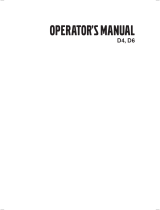 Volvo Penta D4 Manuale utente
Volvo Penta D4 Manuale utente
-
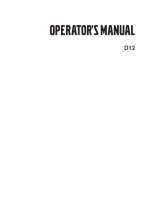 Volvo Penta D12 Manuale utente
Volvo Penta D12 Manuale utente
-
Volvo Penta IPS 600 Manuale utente
-
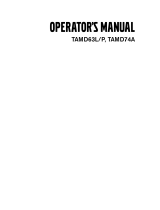 Volvo Penta TAMD63L Manuale utente
Volvo Penta TAMD63L Manuale utente
-
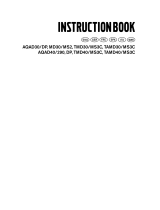 Volvo Penta AQAD30/DP Instruction book
Volvo Penta AQAD30/DP Instruction book
-
Volvo Penta D2-40 Guida d'installazione
-
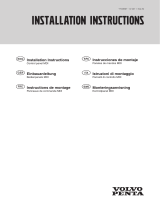 Volvo Penta MDI Installation Instructions Manual
Volvo Penta MDI Installation Instructions Manual
-
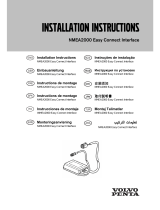 Volvo Penta Easy Connect Interface Installation Instructions Manual
Volvo Penta Easy Connect Interface Installation Instructions Manual
-
Volvo Penta D2-40 Installation Instructions Manual
-
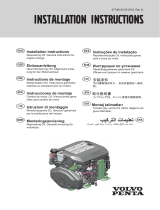 Volvo Penta D3 290/DP Installation Instructions Manual
Volvo Penta D3 290/DP Installation Instructions Manual
Altri documenti
-
Regal 42 Fly-Grande Coupe Manuale del proprietario
-
Yanmar 6HYM-WET Istruzioni per l'uso
-
Zanussi Z 70 VS Manuale del proprietario
-
Enersys Perfect Plus Manuale utente
-
Davey SilensorPRO SP400BT Installation And Operating Instructions Manual
-
Vaillant aroTHERM VWL 85/2 A Operating Instructions Manual
-
Enersys SIRA 01 AX3016U Manuale utente
-
Chattanooga M2 Manuale utente
-
Crowcon Gas-Pro Istruzioni per l'uso
-
Crowcon Gas-Pro IR Manuale utente


















































































